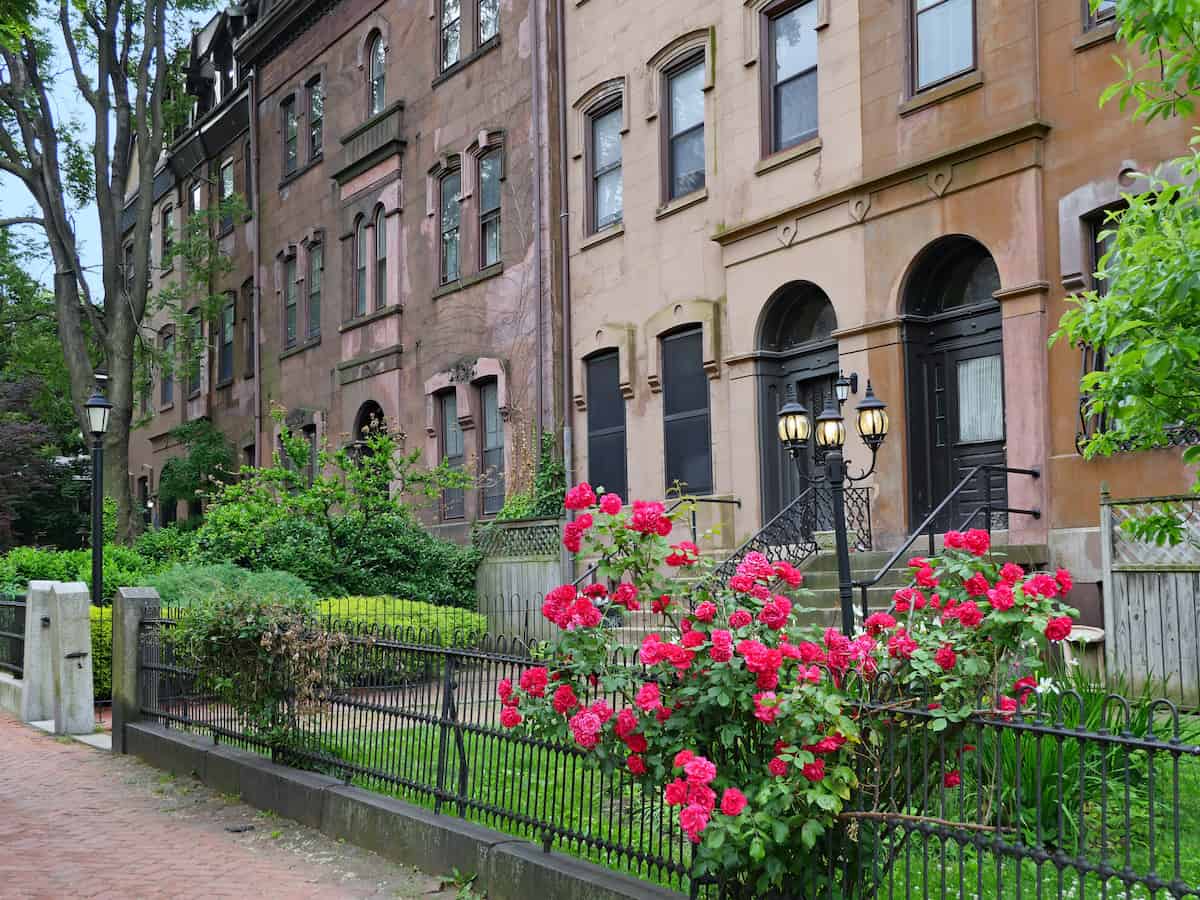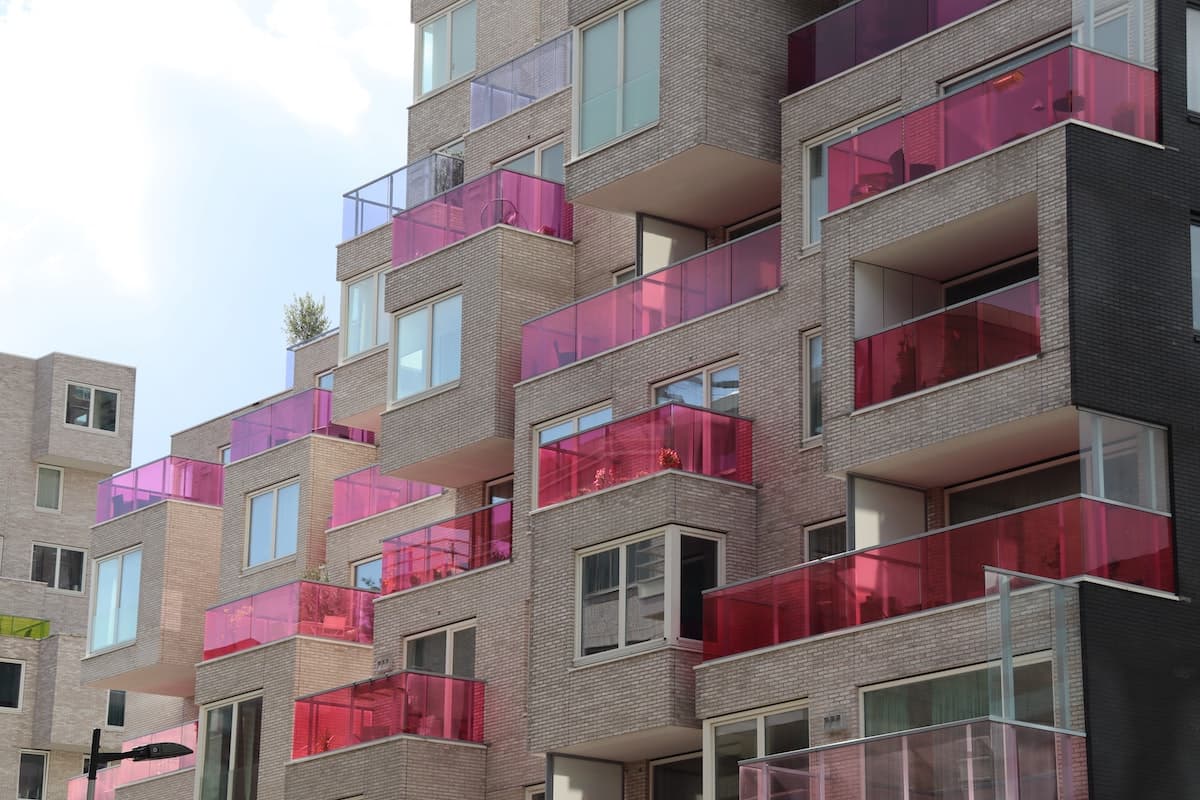When searching for apartments, there's always so much to consider — location, price, proximity to parking or public transportation, closet space — all of which are hugely important when finding that perfect place to live.
However, there's another factor to consider in the apartment hunt that has the potential to profoundly affect your day-to-day lifestyle: the apartment floor on which you live. So, which is the best apartment floor to live on? Each option — top, middle and bottom — has its perks.
Pros and cons of living on the top floor
Like all things, there are both pros and cons of living at the top apartment floor. To make the most informed decisions, it's a good idea to weigh both sides when deciding exactly how high up you want to live and what it means for your day-to-day lifestyle and budget.

Pro: Less noise
Top floor apartments rarely have to deal with noise from foot traffic, both inside and outside of the building. However, if you're a noisy neighbor, living on the top floor could create some potential problems with your downstairs neighbors.
Pro: Panoramic views of the city
The panoramic views from the top floor are nothing to complain about, however, keep in mind that you might not need to seek out a penthouse apartment to get the views you desire. You might be able to see the same sights from a mid-level floor, which could save you money in the end.
When touring the apartment initially, observe the view so you can make an informed decision before signing the lease.
Con: Added cost for rent and utilities
Apartments with the same or comparable floor plans are typically more expensive the higher up they are. And don't forget that heat rises. Your monthly electric bill could potentially skyrocket in the summer, especially if you live in a warm climate, like the South.
If money is tight, you should strongly consider these factors when choosing which apartment floor to live on and rent. The abundant sunlight drenching your apartment coupled with the “heat rises" concept is sure to minimize heating costs in the winter. However, that same combination might drive up your A/C bill in the summer.
Pro: Increased security
Depending on the layout of the building and its built-in security measures, basement and ground floor apartments can pose a higher risk of criminal activity and break-ins than apartments on higher levels.
If your prospective apartment is in a high-rise building with a doorman, is within a gated community, has on-site security or requires a FOB or code for access, crime is less likely to occur.
However, if you fear that criminals could easily access a ground-floor window without an alarm system or bars, you might consider “moving on up" to a higher apartment floor.
Con: More difficult to access
Living on one of the top floors might be attractive, but how easy is it to get there? Does your building have an elevator, or are we talking four to five flights of stairs every time you come and go? Do you have an internal parking deck, but no car? How easy would it be to get to your apartment with two week's worth of groceries?
Make sure to pay extra attention to the ease — or difficulty — of getting up to your place. Additionally, there's the added element of the actual move in and move out, which results in lots of trips up and down the stairs. Keep in mind, apartments that are more than three stories high are required to have elevator access to meet ADA standards.
Con: Limited emergency evacuation options
Living up high can often make evacuating during a fire or natural disaster much more difficult than just walking down a few flights of stairs. Check out your building's evacuation route and plan.
Will you be walking down 20 flights of darkened stairs filled with smoke? How many apartments and residents are there below you that will also be evacuating at the same time? These questions aren't meant to scare you, rather more to prepare you. It's smart to have an emergency evacuation plan in mind when moving to an apartment, regardless of the floor.
Con: Building conditions may impact apartment
Most apartment complexes will have a maintenance team dedicated to the care and upkeep of the place. If you choose to live on the top apartment floor, you want to check out the conditions of the exterior roof and see if any damage has occurred that'll directly affect your apartment.
Pro: More exposure to natural light
Living on the top floor gives you added height and more exposure to natural sunlight. Natural sunlight is a great way to brighten up your place, especially if it's a small floor plan. While natural light is great, it can also make your place hotter, so keep this in mind when you budget for utilities.
Pro: Fewer pests
Living on the top floor means fewer visits from unwanted pests and critters. Bugs and other pests typically live in or on the ground outside, so they're more likely to infest apartments that are closer to where they live in nature.
Pros and cons of living on the bottom floor
A bottom floor apartment, too, boasts some enticing amenities. When looking for the perfect apartment, consider all that a bottom-level apartment has to offer to ensure it meets your wants and needs in a home.

Pro: Easier to access
The first floor of an apartment is ideal for bringing in heavy loads, such as your furniture when moving or that big trip to the grocery store. If you're the type who enjoys frequent trips to the supermarket but doesn't like the added exercise of lugging your purchases to the top floor, the ground floor might be the best choice.
Also, if your health will prohibit you from walking up and down the stairs frequently, a bottom floor apartment can be beneficial.
Pro: Reduced cost of rent and utilities
The bottom floor makes for less expensive air-conditioning bills in the summer as the cool air naturally reigns in lower locations. Also, you'll likely have less exposure to natural sunlight, which will keep your place cooler in the hot months of summer.
And sometimes, apartment complexes will offer lower rent prices for the bottom level because it lacks the views some people desire. So, living on the bottom floor can save you money on rent and utilities.
Con: Potentially more noise
While street noise might be a con in first-floor apartments, you also get the benefit of not having to worry about bugging a neighbor below you. If you're the type who brings a recording of city noises with you on vacation so you can actually fall asleep, the ground floor might be your perfect place to land.
On the other hand, late-night vacuuming or the high-heel lover upstairs might get annoying for a first-floor dweller. Decide how much or how little noise you can tolerate from potentially loud neighbors before making the decision about which apartment floor to live on.
Con: Potential for more pests in the home
When you live on the ground floor, you're generally more susceptible to getting unwanted pests, which can be a major turn-off for some renters. Pests can access the bottom apartment floor more easily, but if you don't mind killing the occasional roach, or have a great plan for pest control, you're good to go.
Pro: More options for outdoor space
Living on the ground floor could mean access to a backyard or courtyard, which is great for tenants with pets, kids or people who love entertaining outdoors. This isn't always the case, but it's something to keep in mind when deciding which apartment floor you want to rent.
Pros and cons of living in the middle
The top and bottom floors are both great options depending on what you're looking for in an apartment rental, but when it comes to heating and cooling and worrying about the trek to and from the apartment, each showcases opposing extremes. As a result, the middle floor is, in a sense, just right.

Pro: Consistent bill prices
The middle floor may not get a seasonal break from heating and cooling costs, but it usually sees a steady power consumption rate during each season. If you're someone who likes to live on a steady budget, the middle apartment floor can help you plan a more stable budget.
Pro: Easier access to your home
While the middle floor has both top and bottom neighbors, it doesn't demand a huge hike up the stairs. And if your building has an elevator, access is essentially a non-issue. Living on the middle floor gives you a little workout, but you won't be working up a sweat every time you go home.
Pro/con: Some noise levels
Mid-level apartment floors aren't exposed to street traffic noise. However, you're surrounded by a lot of neighbors, and foot traffic in the hallways may be the trade-off there.
Choosing the right location to rent
Home is meant to be a place of comfort and peace, so you want to ensure it has everything you need to feel safe, secure and happy. Everything from the cost of the apartment to which apartment floor you choose is important. Not sure you want to live in a high-rise apartment building? Determine which type of rental layout is right for you.

